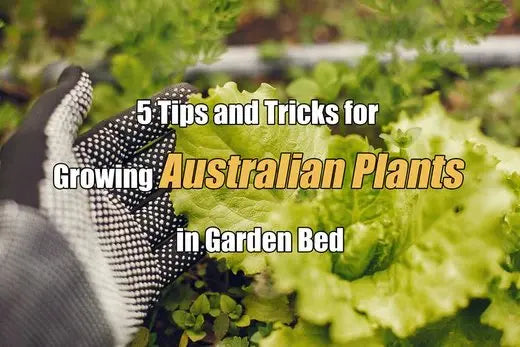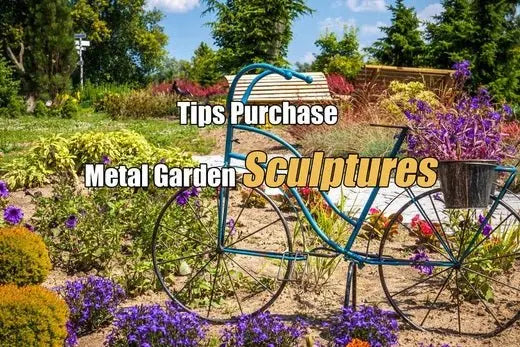How to Grow Sweet Peas in Container from Seed
If you dream of a garden filled with colorful and fragrant blooms, look no further than sweet peas. These charming and delightful flowers are a gardener's best friend; the best part is they thrive in raised garden beds!
Sweet pea flowers come in an array of colors and sizes, from delicate pastels to fiery hues. They are also highly fragrant, making them a great addition to any garden. Planting them in raised beds gives them the drainage and aeration they need to flourish and spread their beauty.
With just a small amount of space and design ideas from decorhomeideas.com, you can have your pea garden up and running in no time. Let's look closer at how you can successfully grow and harvest delicious sweet peas.

Why Choose a Raised Garden Bed for Sweet Peas?
Why should you opt for a raised garden bed when sweet peas can grow anywhere? Raised beds provide an ideal environment for sweet peas to thrive. A raised bed's soil quality and depth are much better than typical garden soil. The height of the bed also helps provide better drainage and air circulation. This helps to ensure that the sweet peas have the best possible conditions for growth. Raised beds offer several advantages that can make your pea-growing journey more delightful:

- Improved drainage: Sweet peas don't like having wet feet, and raised beds provide excellent drainage, preventing waterlogged soil and root rot.
- Increased warmth: Raised beds tend to warm up more quickly in the spring, which is great for sweet peas that like mild weather. Raised beds are more contained, which means fewer weeds and other competing plants. For instance, using a raised bed for sweet peas increases drainage and helps them get more sunlight and air circulation, which is essential for blooming.
- Soil management: Raised beds allow you to customize the soil mix, ensuring ideal growing conditions for your sweet peas. This reduces the need for herbicides and pesticides. It also helps to conserve water since the soil in a raised bed doesn't dry out as quickly.
- Easier harvesting: With raised beds, sweet peas are more accessible for harvesting, making picking them at the right time easier. Each of these factors contributes to the success of your sweet pea garden and help make raised beds the perfect choice for your sweet peas. Raised beds also provide better drainage and aeration, encouraging root growth and helping to keep soil temperatures at optimal levels.
- Weed control: Raised beds make keeping pesky weeds at bay easier, giving your sweet peas the space to shine. Plus, raised beds provide better drainage, which ensures that sweet peas get enough water without becoming waterlogged. This helps promote healthy plant growth and prevents any root rot.
Building Your Raised Garden Bed
Now that you've chosen the ideal spot, it's time to build your raised garden bed. Use wood that is untreated, rot-resistant, and non-toxic. You can use lumber, bricks, metal, or any other material that will be safe and durable. Make sure to use screws or nails to fasten the pieces together. Line the bottom of the bed with landscape fabric to further protect the wood from rot. Fill the bed with soil or compost, and you are ready to plant. Here's a simple guide to get you started:

Gather your materials
You'll need untreated lumber or cedar boards to construct your raised bed sides. Avoid pressure-treated wood, as it releases harmful chemicals into the soil. You'll also need screws or nails to secure the boards together. You'll also need soil and compost to fill the bed. Finally, you'll need seeds or seedlings to start planting.
Choose the size
Sweet peas are vigorous climbers, so consider building a raised bed that's at least 12 to 18 inches deep and 3 to 4 feet wide. This will allow your sweet peas to grow and spread their tendrils. Plant seeds 1 inch deep and 4 to 5 inches apart in rows two feet apart. Water the soil before planting and keep it moist until the seeds germinate. Once the plants start producing pods, pick them regularly to stimulate more growth.
Assemble the bed
Nail or screw the boards together to form a rectangular shape. Place the raised bed on the chosen spot, ensuring its level and stability. Fill the bed with soil. Plant your desired plants and water them. Monitor the soil moisture regularly. Add mulch or compost to the bed. Prune plants as needed. Harvest the plants when ready.
Prepare the soil
The fun part is filling your raised bed with soil. Create a mix of garden soil, compost, and well-rotted manure to create a nutrient-rich and well-drained blend. Add a layer of mulch to conserve moisture and reduce weeds. Water regularly and deeply, and fertilize every two weeks. Monitor the soil for signs of nutrient deficiencies and adjust your fertilizer accordingly. Water the soil before planting to ensure the roots have enough moisture. Plant your seeds or seedlings and water regularly.
Sowing Sweet Peas: Tips for Success
With your raised garden bed ready, it's time to sow sweet peas and watch them flourish. Plant the seeds 1 inch deep and space them about 3 inches apart. Water regularly and mulch around the plants to retain moisture. Once the flowers have bloomed, pick the flowers regularly to encourage more growth. Follow these simple tips for sweet pea-growing success:
Pre-soak seeds
Sweet pea seeds have a tough outer coat, so soaking them in water for 24 hours before planting will aid germination. In many areas around the country that have a shortened growing season, getting plants started indoors is an early spring priority. Presoaking and allowing your pea plants to germinate will help them take root in your soil.
Well-drained soil
Sweet peas need light, loamy soil that drains well and is not too heavy or too sandy. If your soil is not the right mixture, it's best to create your own potting soil in a raised bed where you can control the soil quality. If you aren't certain what type of soil you have on your land, you can have it collected and tested at minimal cost.
Fertilize
Sweet peas need nitrogen-rich soil to produce an abundance of flowers. Add compost or slow-release fertilizer to the soil before planting to ensure sweet peas have nutrients.
Perfect timing
Sweet peas should be planted in spring for best results when the soil is still cool. It's always best to check your growing zone for the right time to plant your peas. You don't want to get started too early and end up with frost-bitten plants.
Trench sowing
Create a trench about 2 inches deep in your raised bed and space multiple trenches about 6 to 8 inches apart. Plant the pre-soaked seeds about 2 inches apart along the trench. Cover the seeds with a thin layer of soil and lightly press it down. Water the soil until it is evenly moist. Place your raised bed in an area that gets direct sunlight. For the best results, plant your sweet pea seeds in a raised bed where they have access to the sun and nutrients they need to thrive.
Conclusion
With their enchanting beauty and captivating fragrance, sweet peas are essential for any garden. By creating the perfect raised bed and following simple gardening tips, you'll be on your way to success. Ensure the soil is well-draining and amended with compost before planting. Deadhead flowers regularly encourage blooming and water deeply but infrequently. You'll soon be rewarded with a sea of vibrant blooms with the right care.
Choose A Container To Grow Sweet Peas
By Abdullah Khan
Author Bio: I began writing as a professional on my personal blog and then discovered my true calling, which is writing about technology, News and gadgets in general. I am a technical writer, author, and blogger since 2010. An industry watcher that stays on top of the latest features, extremely passionate about juicy tech news and everything related to gadgets.


